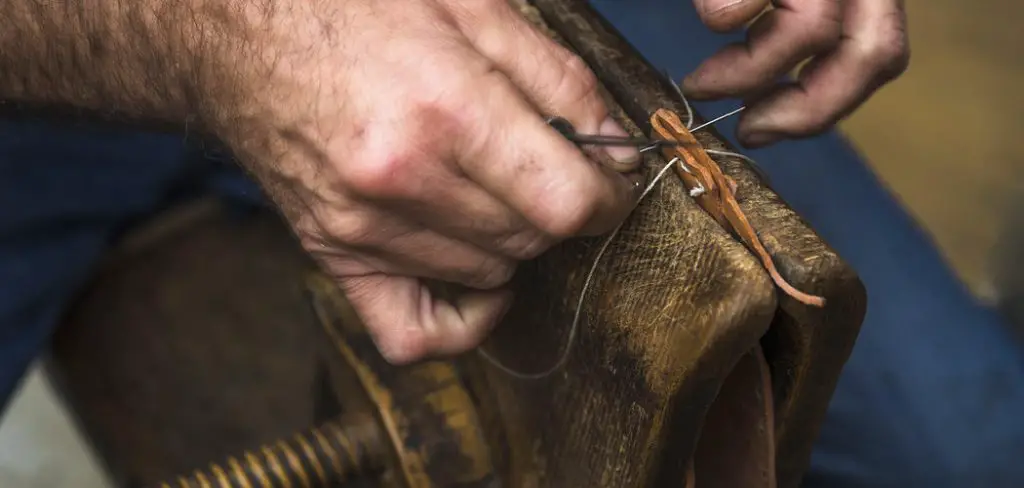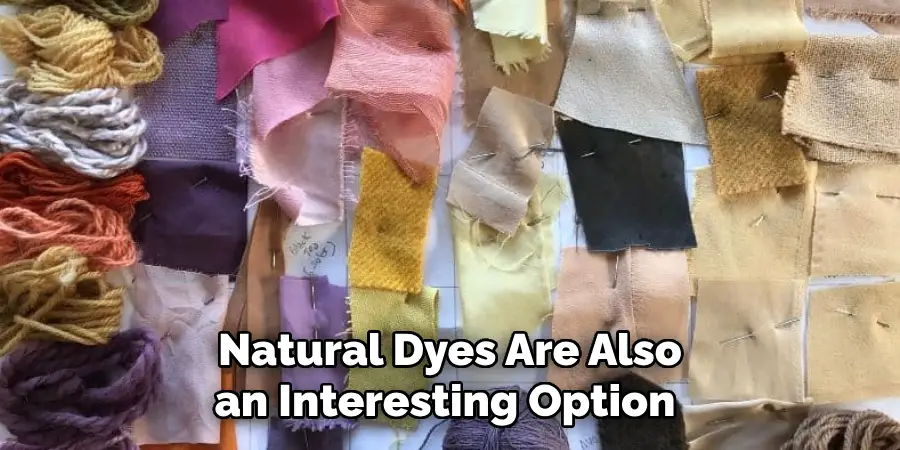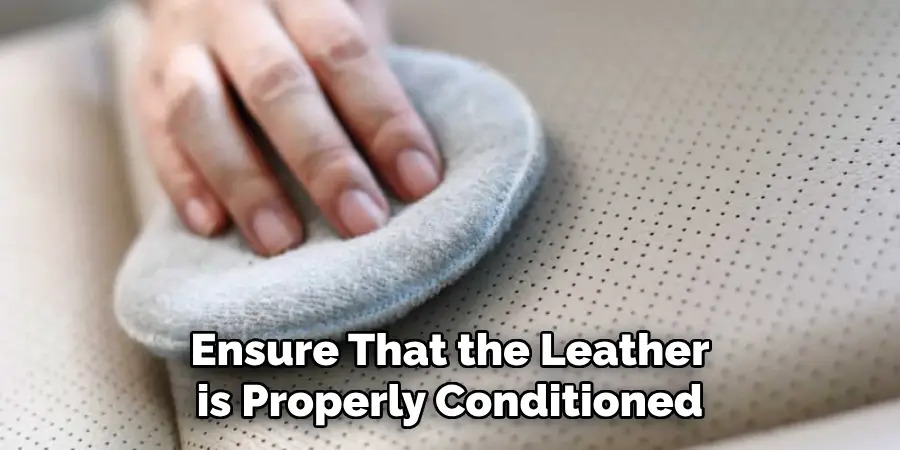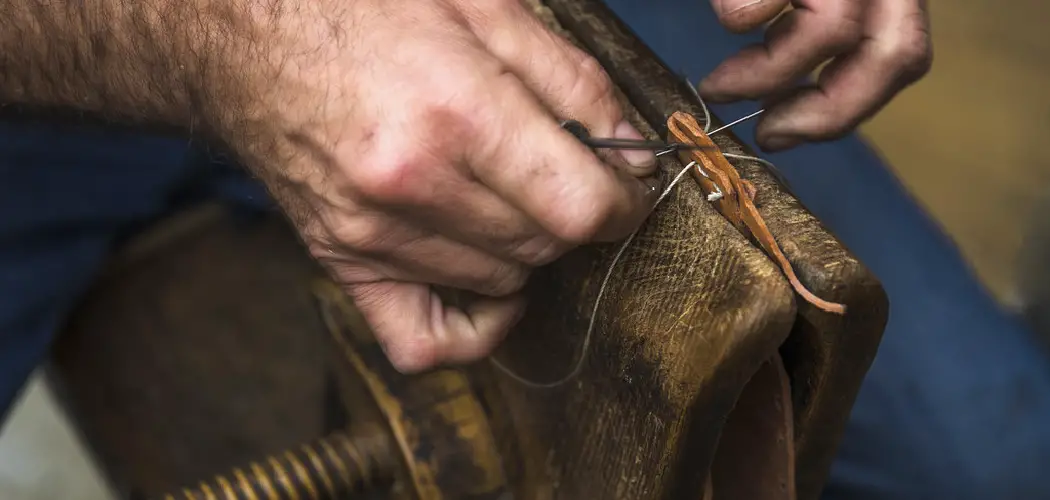Dyeing stitching on leather is a creative and practical skill that allows you to customize your leather projects, achieving a cohesive and polished appearance. Whether you’re working on leathercraft projects such as wallets, belts, or handbags, understanding how to dye stitching on leather can add a personal touch and enhance the overall aesthetics of your work.

This article will serve as your comprehensive guide to mastering the art of dyeing stitching on leather.
We’ll cover the essential steps, materials, and techniques involved in this process, from choosing the right dye and thread to ensuring an even and durable color application. By the end of this guide, you’ll have the knowledge and skills to create stunning leather products that showcase your unique style, making your crafting endeavors more rewarding and visually appealing.
Whether you’re a seasoned leather artisan or a beginner, dyeing stitching on leather is a valuable skill to elevate your projects.
Benefits of Dyeing Stitching on Leather
Dyeing stitching on leather has become a popular trend in recent years, and for good reason. It offers various benefits that make it an attractive option for those looking to customize their leather goods.
One of the main benefits of dyeing stitching on leather is the ability to create unique and personalized designs. With a wide range of colors available, you can choose to match or contrast the color of your stitching with the leather itself. This allows for endless possibilities when it comes to creating one-of-a-kind designs that truly reflect your personal style.
Dyeing stitching on leather also helps to enhance the overall aesthetic of the leather piece. By adding a pop of color or a subtle accent, the stitching becomes more visually appealing and can elevate the look of even the simplest leather item.
In addition to its visual benefits, dyeing stitching on leather can also prolong the lifespan of your leather goods. By coloring the stitching, it helps to protect it from wear and tear, as well as moisture and dirt. This is especially beneficial for items that are used frequently, such as bags or jackets.
Moreover, dyeing stitching on leather is a cost-effective way to update or revamp old leather items. Instead of spending money on a new piece, you can simply dye the stitching to give it a fresh and modern look.
10 Methods How to Dye Stitching on Leather
1. Using Fiebings Leather Dye
Fiebings leather dye is a popular and easy way to dye stitching on leather. It comes in a variety of colors and can be applied with either a brush or sponge. The dye should be applied in thin coats, allowing each layer to dry before applying the next. Once the desired color is achieved, it can be sealed with Fiebing’s leather finish.

2. Using Acrylic Paint
Acrylic paint is another option for dyeing stitching on leather. It is available in a variety of colors and can be applied with either a brush or sponge. Acrylic paint should be applied in thin layers, allowing each layer to dry before applying the next. Once the desired color is achieved, it can be sealed with an acrylic sealer or clear coat of polyurethane.
3. Using Alcohol Ink
Alcohol ink is an excellent choice for dyeing stitching on leather as it has great coverage and does not require any additional sealers or finishes. It comes in a variety of colors and can be applied with either a brush or sponge. Alcohol ink should be applied in thin layers, allowing each layer to dry before applying the next until the desired color is achieved.
4. Using Fabric Dye
Fabric dye can also be used to dye stitching on leather, although it requires more preparation than other methods such as Fiebings Leather Dye or acrylic paint. The fabric dye must first be mixed with water according to package instructions, then brushed onto the stitching using either a brush or sponge until the desired color is achieved. Once complete, the dyed stitching must then be sealed with an acrylic sealer or clear coat of polyurethane for protection from wear and tear over time.
5. Using Leather Stain
Leather stain is another option for dyeing stitching on leather that provides great coverage and does not require any additional sealers or finishes once complete. It comes in a variety of colors and can be applied with either a brush or sponge until the desired color is achieved. Once complete, simply allow it to dry completely before moving onto the next step in your project!
6. Using Pigment Powders
Pigment powders are another excellent choice for dyeing stitching on leather as they provide great coverage without requiring any additional sealers or finishes once complete! They come in a variety of colors and can easily be mixed with water to create a paste-like consistency that can then be brushed onto the stitching using either a brush or sponge until the desired color is achieved!

7. Using Airbrush Paints
Airbrush paints are also an option for dyeing stitching on leather but require special airbrushing equipment which may not always be accessible depending on your skill level! Airbrush paints come in many different colors and can easily provide even coverage over large areas when used properly! Simply apply several light coats of airbrush paint until you achieve your desired result!
8. Using Waxes & Oils
Waxes & oils are also an option for dying stitching on leather but require special waxing & oiling techniques which may not always be accessible depending on your skill level! Waxes & oils come in many different varieties including beeswax, carnauba wax, lanolin oil, neatsfoot oil etc., which all have their own unique characteristics when used properly! Simply apply several light coats of wax/oil until you achieve your desired result!
9. Using Watercolors
Watercolors are an interesting option for dying stitching on leather as they provide vibrant colors without requiring any additional sealers or finishes once complete! Watercolors come in many different shades and are best used by mixing them into small batches of water before brushing them onto the stitching using either a brush or sponge until you achieve your desired result!
10. Using Natural Dyes
Natural dyes are also an interesting option for dying stitching on leather as they provide vibrant colors without requiring any additional sealers or finishes once complete! Natural dyes come from plants such as walnut shells, onion skins, blackberries etc.,
Which all have their own unique characteristics when used properly! Simply mix up batches of natural dyes according to package instructions before brushing them onto the stitching using either a brush or sponge until you achieve your desired result!

Things to Consider When Dye Stitching on Leather
When it comes to dyeing stitching on leather, there are a few important factors to keep in mind. By considering these elements, you can ensure that your leather project turns out beautifully and that the color of your stitching matches the overall aesthetic of the piece.
Type of Leather
The first thing to consider is the type of leather you will be working with. Some leathers may take dye differently than others, so it’s important to test a small area before committing to dyeing the entire piece. Additionally, certain types of leather may require specific types of dyes or techniques for best results.
Color Choice
Another important factor is the color of dye you choose. When selecting a dye color for stitching, it’s essential to consider the color of the leather itself. If you want your stitching to stand out, choose a contrasting color. On the other hand, if you want a more subtle look, opt for a dye that is closer in shade to the leather.
Stitching Material
The type of material used for stitching can also impact how well it takes on dye. Thicker and sturdier materials, such as waxed thread or nylon, may require multiple coats of dye to fully absorb the color. On the other hand, thinner and more delicate materials, like silk thread, may take on the dye quickly and easily.
Conditioning
Before dyeing your stitching, it’s important to ensure that the leather is properly conditioned. This will not only help the dye to absorb more evenly, but it will also prevent the stitching from drying out and becoming brittle. Use a leather conditioner or oil to soften and nourish the leather before beginning the dyeing process.

Conclusion
Now that you know how to dye stitching on leather, why not give it a try? Acting out this process can help revive the beauty of old leather items. Plus, it’s quite simple and only requires a few basic materials to get started. With just a few steps, you can dye stitching and make your leather accessory look like brand new.
Furthermore, increasing the range of colors available to you by just a few steps can also be incredibly fun – experimenting with different dyes is an exciting way to express yourself and find creative solutions for every project.
All in all, dyeing stitching on leather is an easy process that yields beautiful results and will help you explore your creativity. So don’t hesitate – get out there and show everyone just what kind of amazing things you can do!

